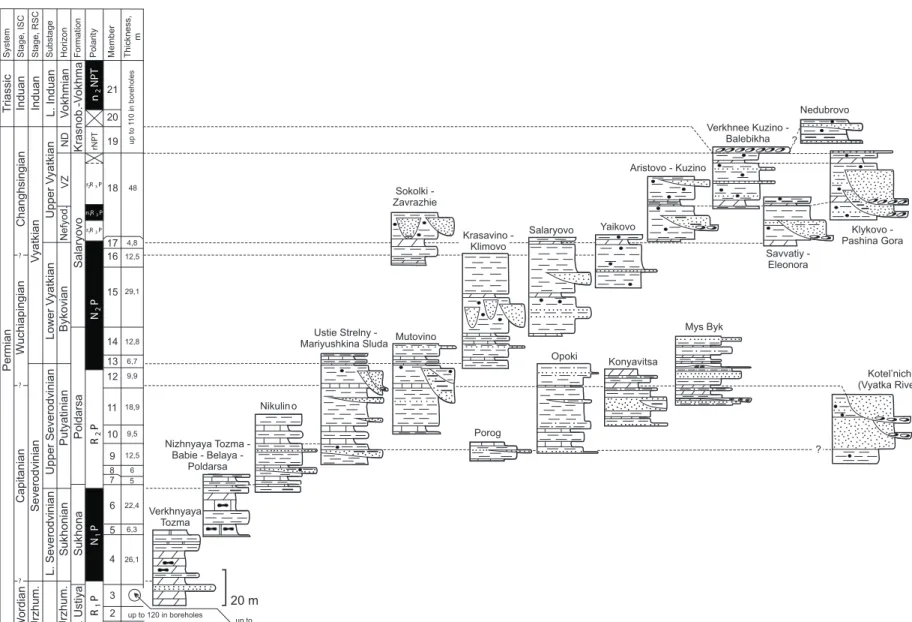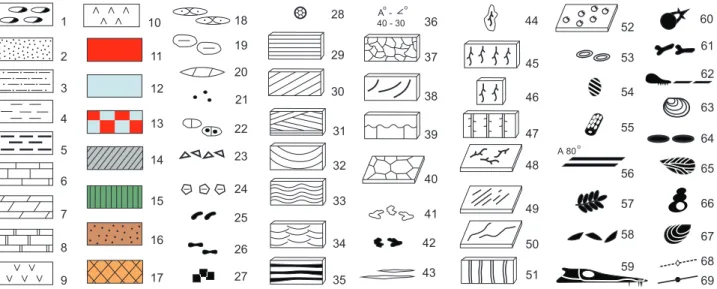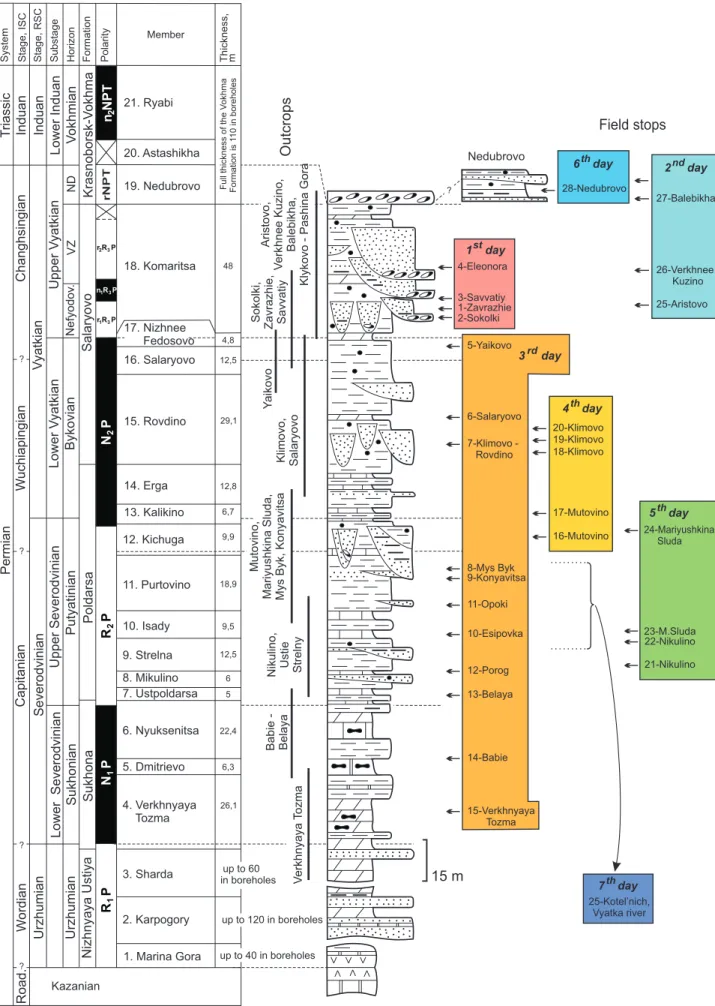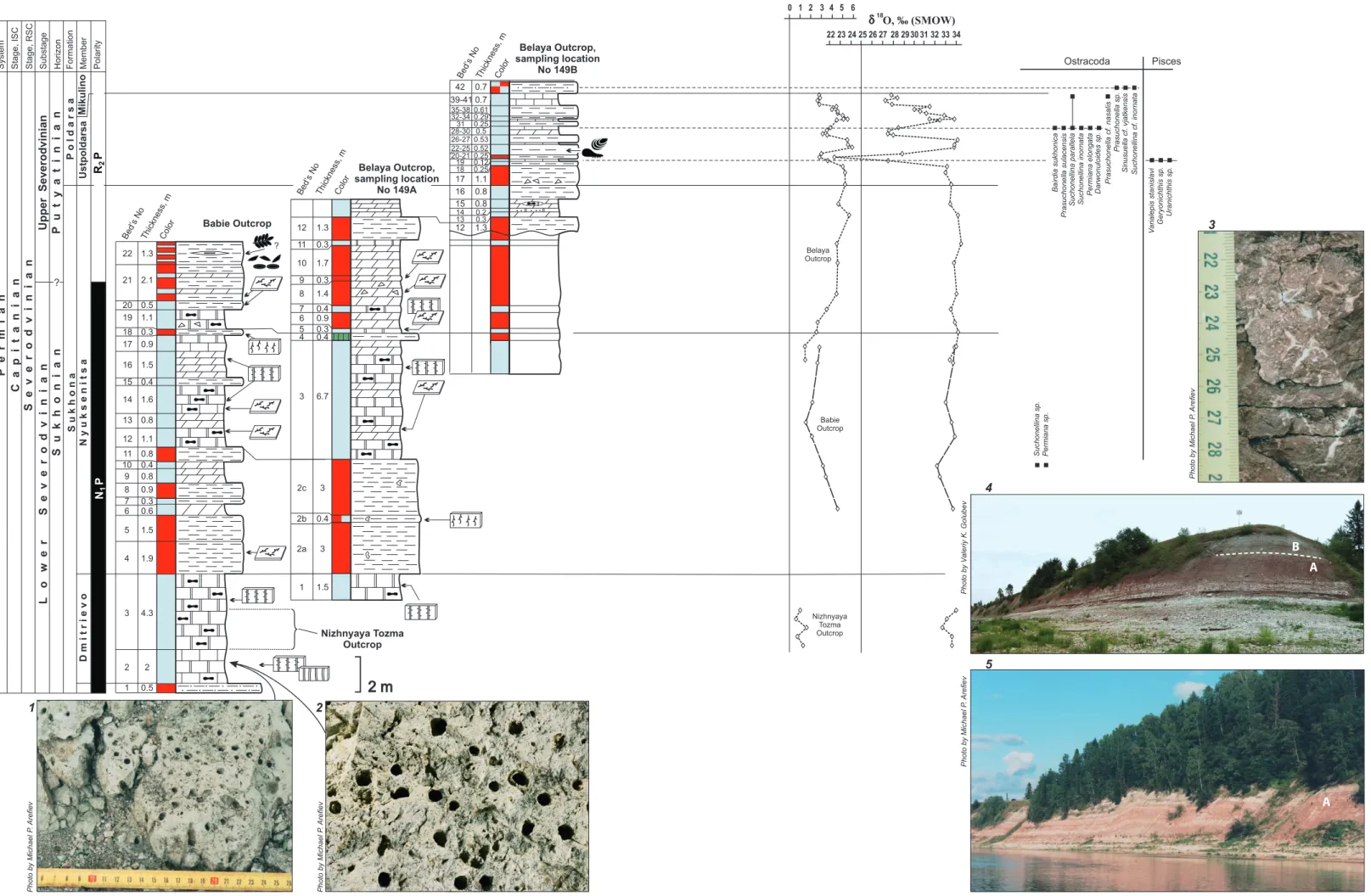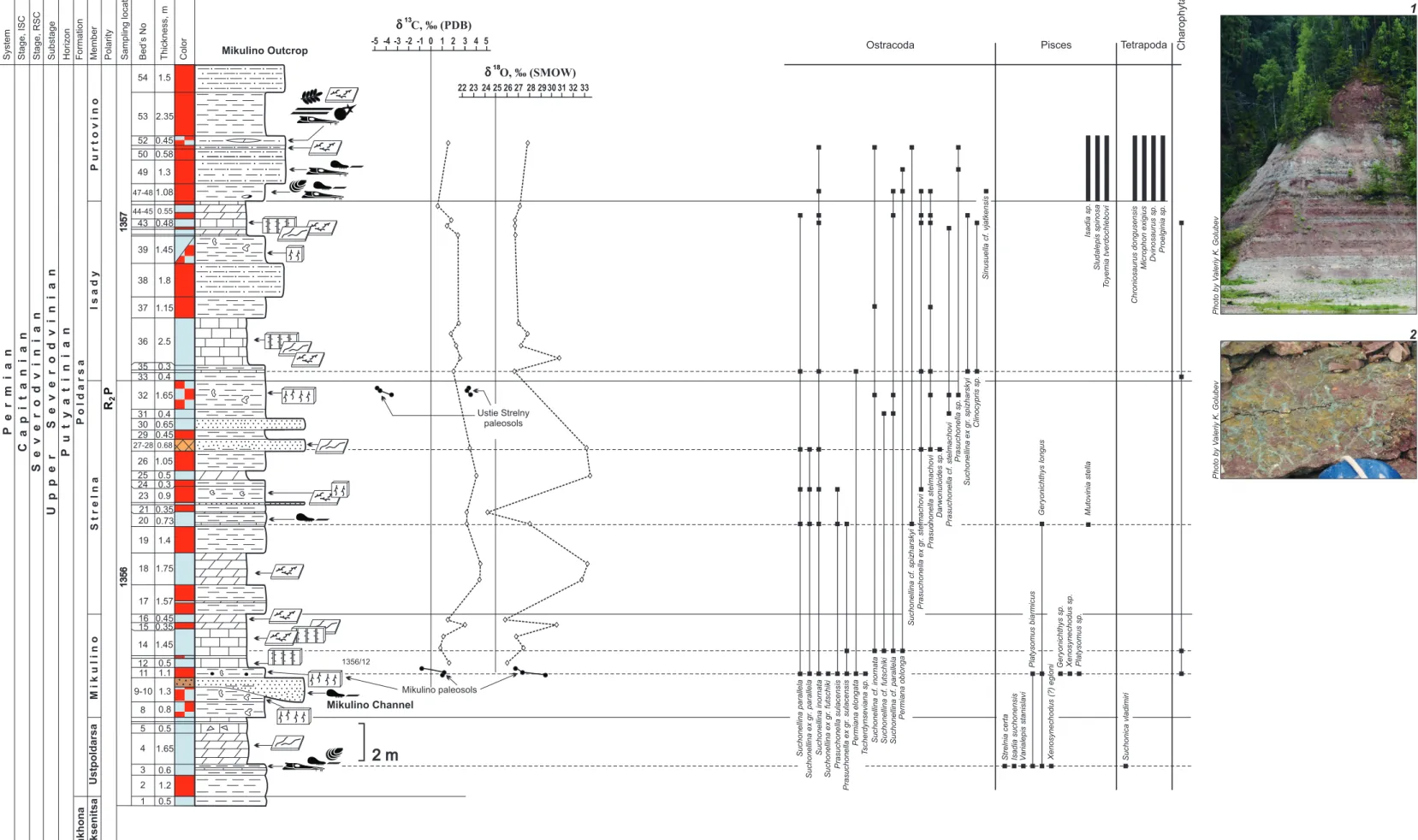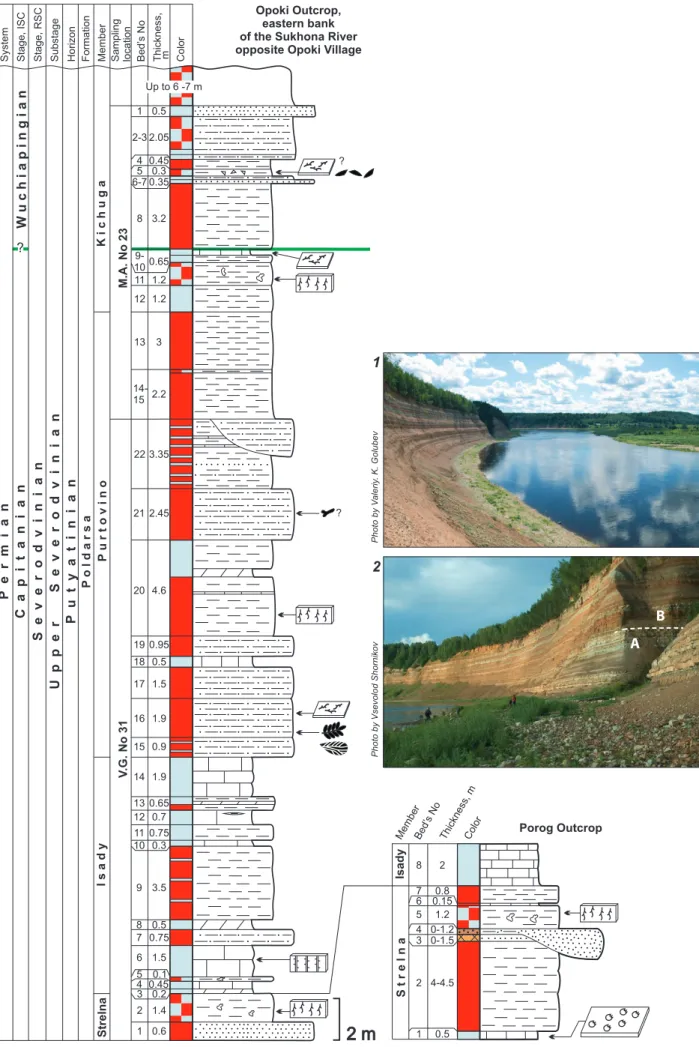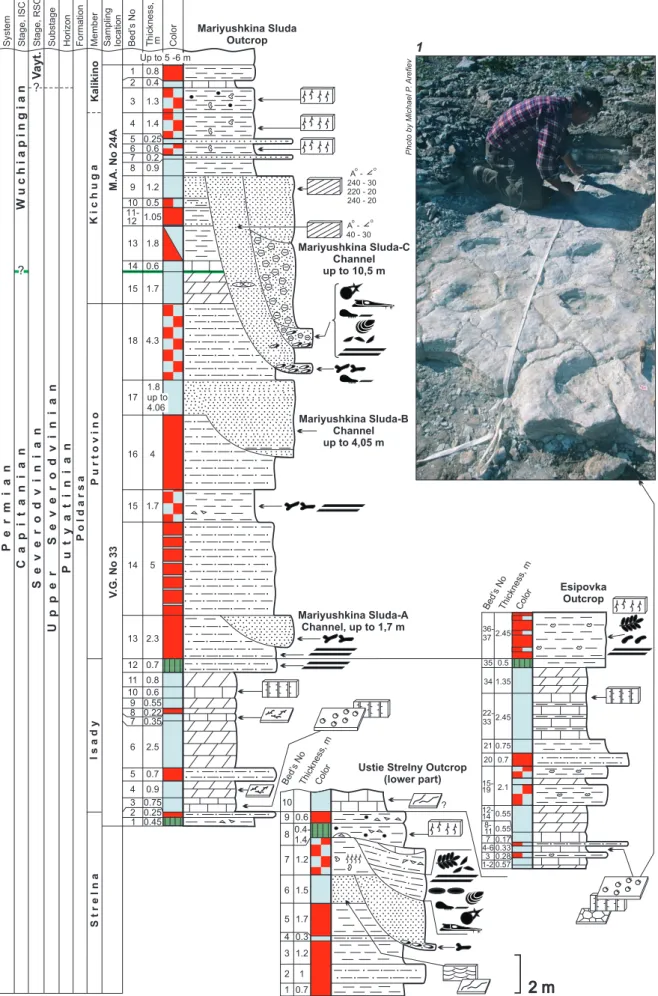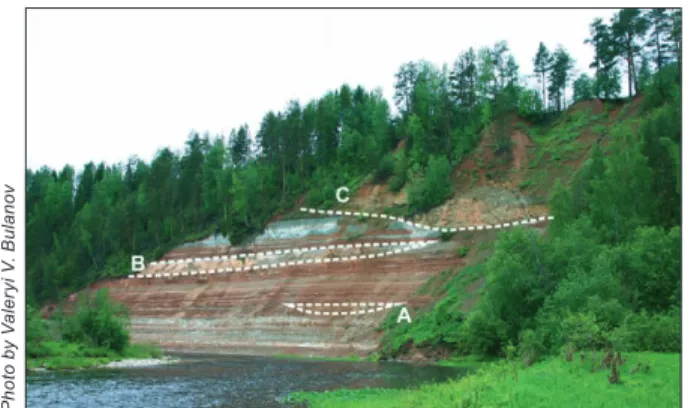Geological Institute of the Russian Academy of Sciences Borissiak Paleontological Institute of the Russian Academy of Sciences. Arefiev – Geological Institute of the Russian Academy of Sciences, Natural History Museum of the St. The best part of the Permian continental sequence of the Russian Platform is located in the Sukhona and Malaya Severnaya Dvina river basins, Vologda region.
This territory is located in the northeastern part of the Moscow basin (syncline), on the Sukhon wave (Figure 1). Location of Permian and Triassic sections in the Sukhona, Mala Severnaya Dvina and Yug river basins. Correlation of Permian and Lower Triassic outcrops on the Sukhona, Mala Severnaya Dvina, Yug and Vyatka rivers.
Stratigraphic Committee of Russia as the upper stage of the Tatar series (Commission on the Perm…, 2006). Composite portion of the Permian and lower Triassic of the Sukhona, Malaya Severnaya Dvina and Yug river basins.
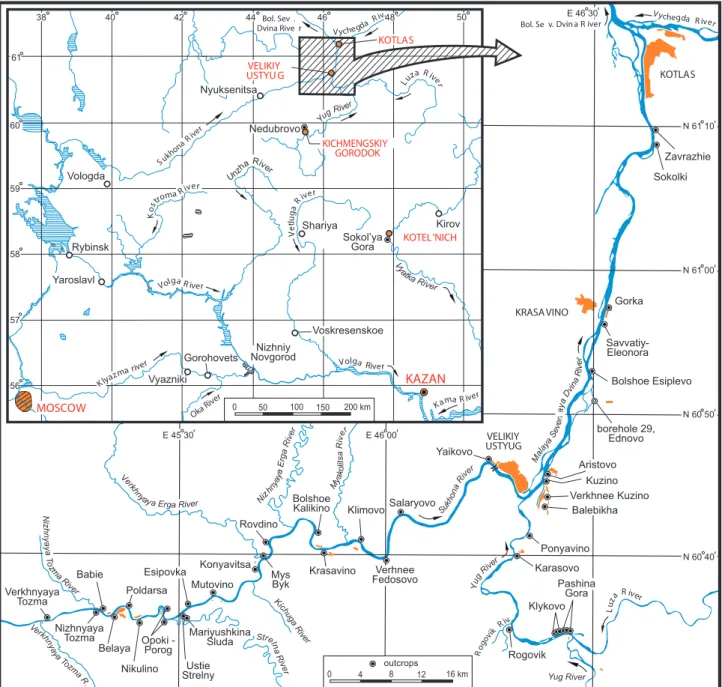
Middle Permian – Lower Triassic continental sections of the Sukhona, Malaya Severnaya Dvina,
Kichmenga and Vyatka rivers
Marl, greenish gray, massive, weak silt, flat, thin flat in the lower part of the bed. Clay, green with small cherry-red flecks, massive, in the middle part of the bed with interbeds of limestone (2 cm) beige, mottled, massive, with ostracods Clinocypris (?) sp., Permiana elongata (Posner), Prasuchonella stelmachovi (Spizharskyi), P. Clay, red-brown, massive, with interbed of (13 cm) brown-gray clay in the middle part of the bed.
In the middle part of the bottom there is an intermediate bed of brown, very saline clay (10 cm). Clay, reddish-brown, mottled, plastic, with numerous migrant plant roots in the upper part of the bed. Clay, red, very sandy, with an interlayer of gray siltstone in the upper part of the soil.
Clay, variegated, reddish-brown with medium gley spots in the upper part of the bed, bluish-grey, with numerous. Silt, light brown, strongly clayey, calcareous, thinly laminated horizontally in the lower part of the bed, with numerous migrant plant roots Radicites sp. Clay, reddish-brown, with bluish-gray spots in the upper part of the bed, silty.
Interbeds of pale yellow marl up to 2 cm thick are located in the middle part of the bed (Fig. 32, photo 5).
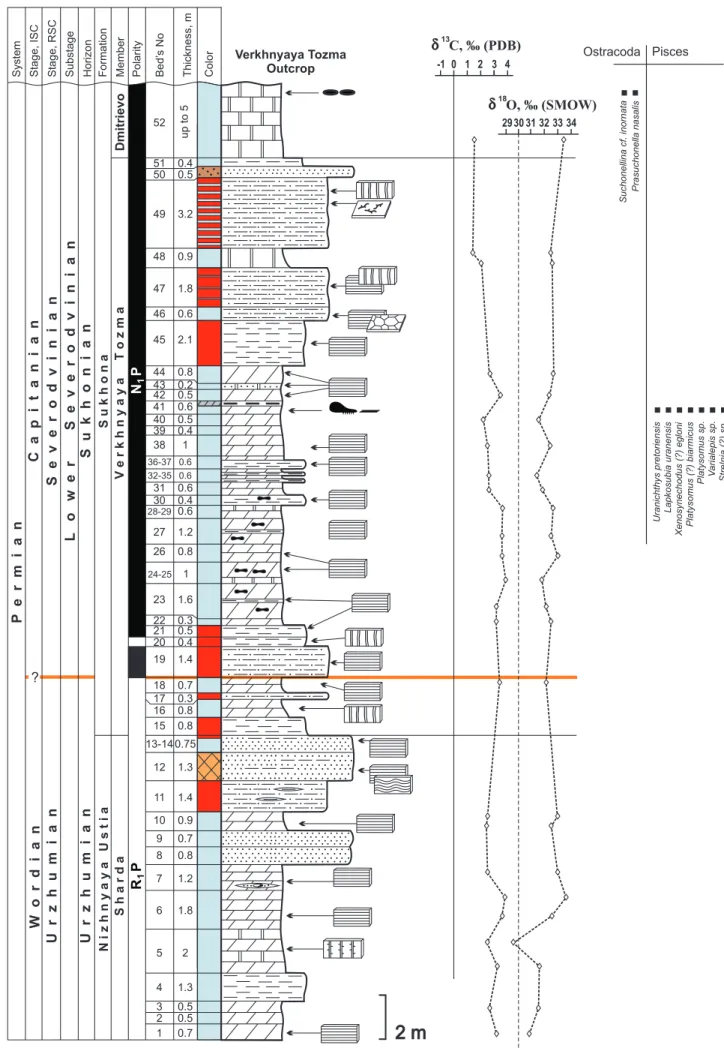
Main Middle Permian – Lower Triassic isotope, paleomagnetic, and biotic events
Siliceous gravelstones are characteristic of the Vyaznikian-Induan beds in the eastern part of MB. Finally, climate changes at the Permian-Triassic boundary naturally correlate with changes in the composition of the argillaceous fraction. However, an abundance of palygorskite was recorded in the inner Ryabi member of the Vokhma Formation (Fig. 35).
Paleomagnetic properties and zonation in the Permian sequence of the Sukhona River Basin are complex. In the Verkhnyaya Tozma, Dmitrievo and Nyuksenitsa members ostracod remains of Suchonellina inornata Spizharskyi, S. The lower boundary of the Vyatkian stage is fixed at the bottom of layer 75 in the Mutovino section (Fig. 16).
There are three major stages in the Permian–Lower Triassic evolution of the fish fauna from European Russia. The lower part of the Permian sequence is characterized by the Platysomus Superassemblage (Fig. 35). In the Sukhona River Basin, the fish fauna is significantly renewed at the level of the Strelna Member of the Poldarsa Formation.
At the Sukhona River, the last appearance of this fauna is observed in the Mikulino Member of the Poldarsa Formation. More than twenty locations of the Toyemia Superassembly fish have been found in the Sukhona River Basin (Fig. 35). The next serious change in ichthyofauna evolution occurs at the border of the Permian and Triassic.
Fossil remains of Saurichthys sp. Tetrapod remains of the Poldarsa Formation of the Sukhona River, Upper Severodvinian (Capitanian - lower of Wuchiapingian). Two major events can be recognized in the Permian history of the tetrapod community of Eastern Europe.
After the disappearance of the so-called Siberian cordaites (Vojnovskyales) in Severodvini, the flora of this region is more similar to the flora of Central Europe than to Angaraland, and according to the classification of Krassilov (2000), it was placed in the ecotonal zone of Eurangaria. . The origin of the species is widely discussed in the literature (Afonin et al., 2001;
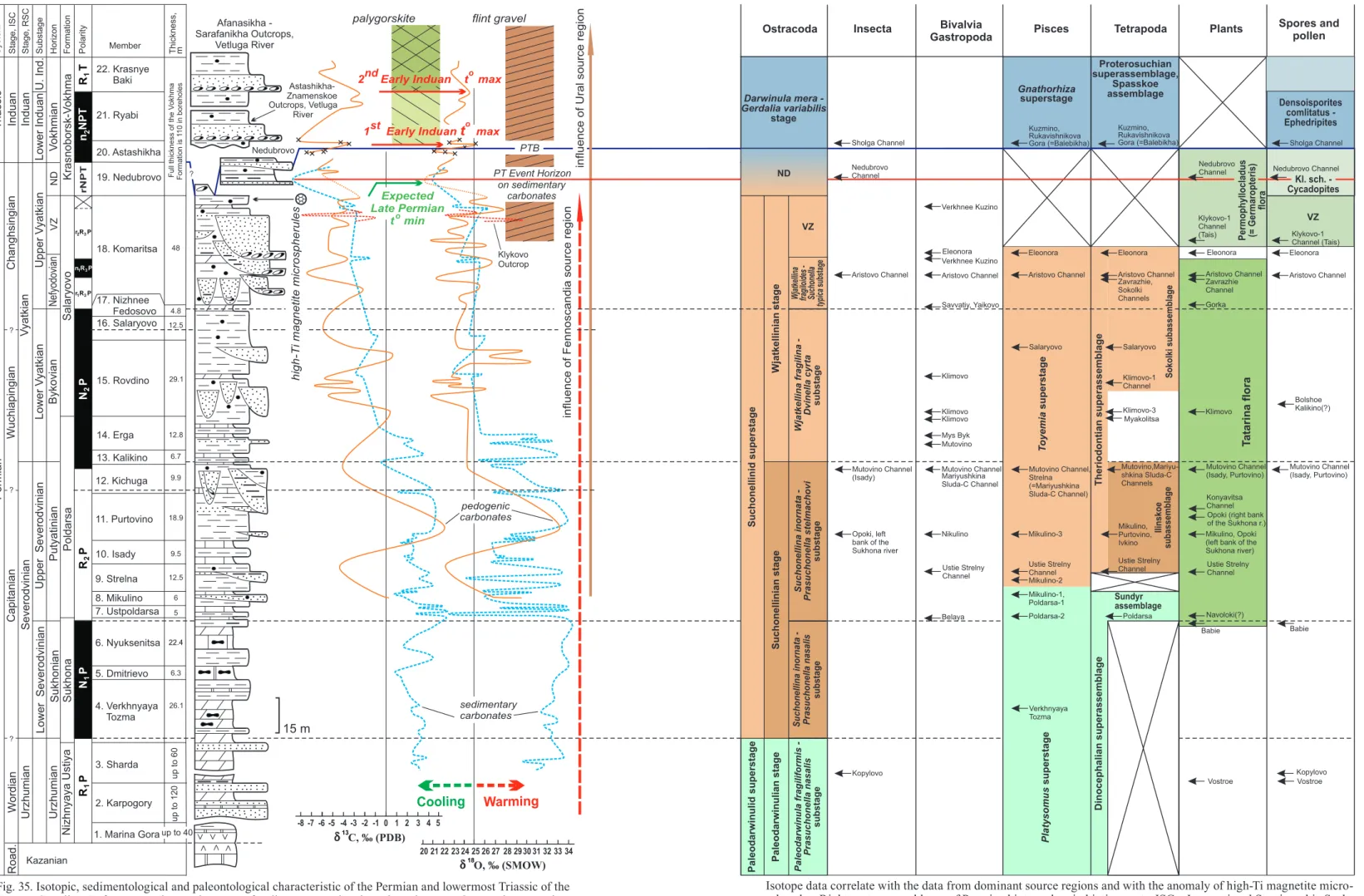
Synthesis of the data
Permian and Triassic chronochrons and tetrapod-based biostratigraphy of Upper Tartar deposits of Eastern Europe. New data on planar remains from the Upper Permian and Lower Triassic of the Russian Platform. Global stratotype section and point (GSSP) of the Permian-Triassic boundary // Episodes.
Permian and Triassic tetrapods of Eastern Europe // Transactions of the Paleontological Institute of the Russian Academy of Sciences. Formal system of distributed leaf cuticles of pteridosperms (Peltaspermaceae) from the Permian and Triassic of the Russian Platform. Early Triassic (Induan) megaspore assemblage of the marly clays of the Sholga locality, Kirov Region, Russia.
The origin and significance of pedogenic dolomite from the Upper Permian of the South Urals of Russia. Floristic evidence of transitional Permian-Triassic deposits of the Volga - Dvina region // Permo-file. On the stratigraphy of the Tatar stage in the area of the Sukhona river // Iz- vestia Glavnogo Geologo-Razvedochnogo Upravlenia.
Lutkevich, E.M., 1938. Tatarian phase of the Russian platform // Bulletin of the Moscow Society of Naturalists. Corroboration of the Severodvinian-Vyatkian Stage boundary in the reference section of the Sukhona River from ichthyofauna. ed.). On the Stratigraphy of the Upper Permian Beds of the Northern Russian Platform.
Stratigraphy of the Tatarian deposits of the Sukhona River Basin // Bulletin of the Moscow Society of Naturalists. Aeolian deposits of the Tatarian Stage in the Vyatka River Basin // Proceedings of the USSR Academy of Sciences. Large sandy lenses in Upper Permian deposits of the northern part of the Moscow line.
The Sukhona River Natural, Historical, and Cultural Park
The Valley of the Sukhona and Malaya Severnaya Dvina rivers is a real gem of the Russian North. It can rightly be equal to such a UNESCO world heritage site as the Solovetsky Monastery on the White Sea, or the paintings of Dionysius in the Ferapontov Monastery. Surprisingly, the Sukhona River bank has become the place where the geological history, reflecting the sequence of events of the Late Permian ecological crisis, is united with the rich historical and cultural heritage of human civilization.
In the 17th century, Velikiy Ustyug became one of the most attractive trading centers in Russian Kardom. Most of the Russian expeditions connected with the east started from the shores of Sukhona in the same century, while many others in the 18th century. Type and reference sections of Permian-Triassic continental sequences of the East European Platform: major isotope, magnetic and biotic events.
XVIII International Congress on the Carboniferous and Permian Sukhona and Severnaya Dvina Rivers field trip.
